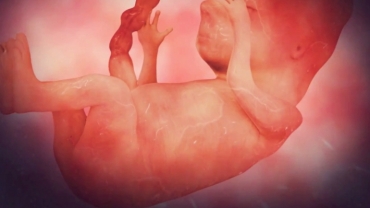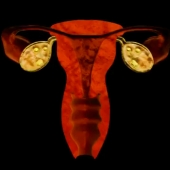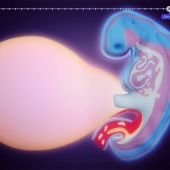Twin-to-twin transfusion syndrome (TTTS) is a complication of disproportionate blood supply, resulting in high morbidity and mortality. It can affect monochorionic multiples, that is, multiple pregnancies where two or more fetuses share a chorion and hence a single placenta. Severe TTTS has a 60–100% mortality rate.
Twin-twin transfusion syndrome (TTTS) is a rare, serious condition that can occur in pregnancies when identical twins share a placenta. Abnormal blood vessel connections form in the placenta and allow blood to flow unevenly between the babies. One twin − called the donor – becomes dehydrated; and the other − called the recipient − develops high blood pressure and produces too much urine and over fills the amniotic sac.
TTTS is a disease of the placenta, not the babies themselves, and affects each twin differently. The donor twin, who is becoming dehydrated, does not produce as much urine as it should, resulting in a low amount of amniotic fluid and poor fetal growth. The recipient twin, whose system is overwhelmed by too much fluid, produces more urine than usual. This eventually leads to an enlarged bladder and excess amniotic fluid. The excess fluid can put a strain on the recipient twin’s heart, sometimes leading to heart failure.
Treatment of twin-to-twin transfusion syndrome generally involves repeated amniocentesis for the recipient twin, in order to keep the level of excess amniotic fluid down. Fetal laser surgery may be considered in some cases to sever the blood-vessel connection between the twins.
In 70 percent of cases laser surgery ensures the survival of at least one twin, and in 33 percent of cases it saves both of them. In cases in which one twin dies, the likelihood of complications for the surviving twin drops from 35 percent to 7 percent.
In some tragic cases, a procedure known as selective cord coagulation may be undertaken. This is done if laser ablation of the connecting blood vessels is impossible for some reason, or if one twin is already dying. With selective cord coagulation, the flow of blood and nutrients to the dying fetus is stopped at the umbilical cord. This ensures the death of one fetus while providing the other with a reasonable shot at survival.
This animated video explains in detail about Twin-to-Twin Transfusion Syndrome. If you are pregnant with twins who have Twin-to-Twin Transfusion Syndrome, blood is passing from one twin to another.
- 3495 views













